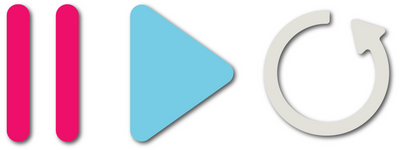[Serum Tutorial] Flume Style Reese Bass Preset
When you think of the Future Bass genre, for most people, Flume instantly comes to mind. Flume is without a doubt, one of the major artists that pioneered the Future Bass genre, and today we're going to look at creating Reese Bass Preset within XFer Record's Serum that is identical to the same Reese Bass Preset Flume himself uses in many of his tracks. We're going to be covered the Tone using OSC A, OSC B, and the Sub OSC.
Tone
-
OSC A, OSC B, and the Sub OSC
-
OSC A
-
Select the Analog Category, and select SawRounded. At WT Position 1, the Wavetable is as it's listed, a rounded off Saw, but if we change the WT Pos to 20, the wavetable turns into a Saw Wave with some nice added harmonics that you won't get out of just a default Saw Wave. Next, we can turn the Unison voices to 7 to add a nice thickness to the sound. All this is doing is adding 6 additional voices, and detune them slightly. You can use the Detune knob to make the additional voices you added with Unison more or less in tune with each other. The most important parameter that makes a Reese Bass is the Fine Tune. For OSC A, set the Fine Tune to -20.
-
OSC B
-
Select Reesey Mess 1 [SL]. We're going to leave the WT Position at 1, and turn up the Unison voices to 5. Next, turn the Detune knob to 0.04. Having OSC B's detune knob set lower will really blend well with OSC A's more out of tune voicing. We're also going to move OSC B down one octave to cover more of the spectrum, and just like OSC A, we're going to play with the detune knob, but instead of setting it to -20, we're going to set it to +20.
-
Sub OSC
-
Let's use the Sub OSC to add an additional Sine Wave signal to our sound to just thicken it up and add a bit of sub to our bass. I felt that the sub bass was coming through a bit too much so I chose to lower the volume level to 50%.
-
Tip
-
Playing around with the octaves of the oscillators and the fine tuning is always a good idea when trying to add thickness and a sense of texture to your sounds.
Filter
-
Since this is a Bass Preset, there's really no need for high frequencies; if they're present, it just leads to a muddy mix in most scenarios.
-
First, let's select MG Low 24 under the Normal Filter Tab, and make sure both OSC A and B are being routed through the filter.
-
I decided to cut back on the Filter Cutoff, setting it to 200. This is completely up to you depending on the track that you're working on. I left the resonance knob where it was (20%) and turned up the Drive to 25%. The Drive knob is really just a volume boost to the filter you have selected. I also decided to bump the Fat knob up to 35% which just added a bit of texture.
FX
The effects we're going to use are pretty short and sweet
-
EQ
-
I added an EQ and set the Low Cut Frequency to 65 Hz and set the Q to 40%. This will nicely roll off any frequencies under 65 Hz to make enough room for your dedicated sub bass in your track.
-
Compression
-
I added a Compressor and turned on the Multiband mode, as well as turned up the gain about 9 dB. All the other settings are the same.
-
Distortion
-
To really add some crunch to the bass and make it more Flume like, I added a Distortion set to the Diode 2. I started off having the Mix level set to 100% and playing with the Drive until I felt like it had enough grit to it, then pulled back the Mix. I found that setting the Drive to 30% and the Mix to 65% provided a nice amount of grit while still keeping the signal somewhat clean.
-
Filter
-
Even though previously routed all Oscillators through the built in filter in Serum, we're going to add another one on the effects rack to cut off the highs that were added with the Compressor and Distortion. I selected an MG Low 24, and set the cutoff frequency to 850 Hz.
Finishing Touches
-
Most basses are usually only playing one note. We can turn on Mono under the Voicing section in the bottom left to ensure only one note will be played at all times.
-
I also chose to turn on Legato. The Legato button is only available when you have Mono selected, and when turned on, will make it to where Envelopes and LFOs won't re-trigger when a new note is pressed, allowing an easy transition between notes.
-
Finally, Portamento, or Glide, is always a nice finishing touch to consider putting on basses.

Leave a comment